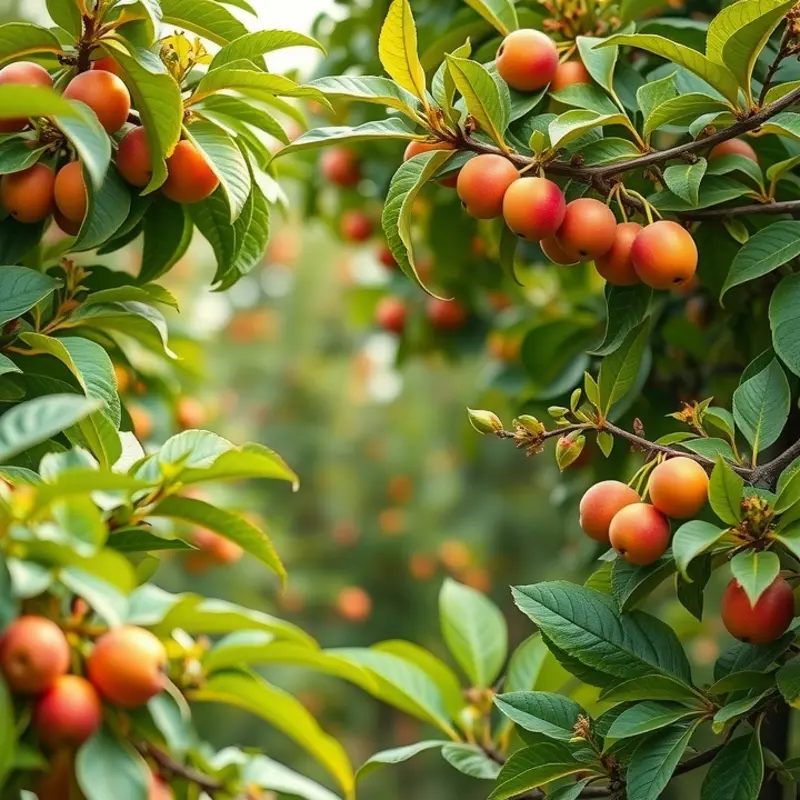Navigating dietary choices as a diabetic can be overwhelming, especially with the multitude of myths surrounding food. Among these, fruits often face scrutiny for their sugar content, leaving many to wonder if they are safe. This exploration seeks to clarify the role of fruits in a diabetic diet, providing insights into their benefits and how to incorporate them mindfully.
The Sugar in Fruit: What Diabetics Need to Know

For individuals managing diabetes, understanding fruit sugar is essential for controlling blood glucose levels. Fruits contain natural sugars, primarily fructose, glucose, and sucrose. Though these sugars are naturally occurring, they can still influence blood sugar levels. Fructose, specifically, doesn’t spike blood glucose significantly, but excessive intake can affect insulin sensitivity over time.
A critical tool for managing fruit intake is the glycemic index (GI), which ranks foods based on how they affect blood sugar. Foods with a high GI raise blood glucose more than medium or low-GI foods. Many fruits have a low to medium GI, making them suitable for a diabetes-friendly diet. For example, cherries and berries typically have a lower GI compared to bananas or pineapples.
Fiber plays an integral role in how carbohydrates affect blood sugar levels. Fruits high in fiber can slow the absorption of sugar, leading to a more gradual rise in blood glucose. Apples, pears, and citrus fruits are excellent sources of fiber while maintaining lower GIs.
Debunking Myths: There’s a common misconception that all fruits must be avoided to manage diabetes effectively. This isn’t true. While it’s essential to choose fruits wisely, wholly excluding them would mean missing out on vital nutrients and antioxidants they offer.
Guidelines for selecting fruits include prioritizing fresh, whole fruits over processed ones, like canned fruits in syrup, which often contain added sugars. Dried fruits, too, while useful in moderation, are more concentrated sources of sugar and should be consumed carefully.
Practical Tips: Opt for portion control and accompaniments that balance the meal. Pairing fruit with protein or healthy fat can mitigate rapid spikes in blood sugar. For instance, adding a handful of nuts to an apple snack provides this balance.
Exploring portion control might also involve making efficient meal prep choices, akin to practical ingredient batching. Planning balanced meals can include fruits in a way that supports blood sugar control.
Ultimately, safe fruit consumption as part of diabetes management involves understanding the unique attributes of each fruit, considering their glycemic index, fiber content, and balancing them within the broader context of a nutritious diet. Embracing fruits mindfully can contribute positively to overall health without compromising glucose management.
Incorporating Fruits into a Balanced Diabetic Diet

Fruits, rich in vitamins, minerals, and fiber, hold a cherished place in a balanced diet. For diabetics, the trick lies in consuming them mindfully. Here’s how to enjoy fruits without compromising on blood sugar control.
Portion Control: Portion size is crucial. Aim for about one small fruit or half a cup of mixed fruits. This size contains roughly 15 grams of carbohydrates, a manageable quantity for most diabetics. Remember that dried fruits, while nutrient-dense, are more concentrated in sugars. A small handful might already exceed the carbohydrate content of fresh fruit servings.
Timing Your Fruit Intake: The timing of fruit consumption can impact glucose levels. Consuming fruits alongside meals or as part of a structured snack can ward off unwanted blood sugar spikes. Incorporating them with breakfast or evening snacks might also maintain steady energy levels throughout the day.
Balancing with Proteins and Fats: Pair fruits with proteins or healthy fats. This combination slows sugar absorption, preventing sharp rises in glucose. For example, consider a small apple with a tablespoon of nut butter, or some berries alongside a handful of nuts. This pairing enhances flavors and keeps you satiated longer.
Choosing Low Glycemic Index (GI) Fruits: Opt for fruits with a low GI score, such as cherries, apples, and pears. These produce a gradual rise in blood sugar, aiding in better glucose management. Avoid high-GI fruits like watermelon or pineapple; if you do indulge, consume them in smaller amounts.
Mindful Meal Planning: Integrating fruits thoughtfully into your meals enhances both flavor and nutrition. A fruit salad can elevate a simple yogurt or oatmeal breakfast, while adding citrus slices to salads can provide a zesty contrast that complements savory dishes. This deliberate pairing can encourage more thoughtful eating habits.
Monitoring Blood Sugar Levels: After consuming fruit, track your blood sugar levels to understand its impact on your body. This practice can help you adjust portions and timing as needed, fostering a more tailored approach to your diet. Find more strategies for mindful eating here.
Balance, moderation, and informed choices make fruits a viable component of a diabetic diet. Embracing fruits while considering the above strategies can help manage diabetes more effectively without sacrificing variety or taste.
Final words
Fruits can safely be part of a diabetic diet when consumed mindfully. Understanding their sugar content and the benefits of fiber and vitamins is crucial for effective management of blood sugar levels. By choosing lower glycemic fruits and practicing moderation, diabetics can enjoy the flavors and nutrition fruits offer. Consulting with a registered dietitian can further personalize fruit choices to match individual health needs and preferences. Ultimately, the goal is to strike a balance that allows for enjoyment while maintaining health.








